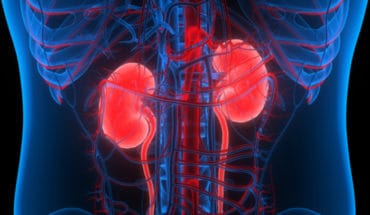World Heart Day is the 29th September. Created by the World Heart Federation, World Heart Day informs people around the globe that CVD, including heart disease and stroke, is the world’s leading cause of death claiming 17.9 million lives each year.
Doing the math to pin down a rare heart disease:
Science and medicine have progressed in leaps and bounds, often aided by advances in technology, yet thousands of rare diseases continue to impact the lives of millions of people. A disease is “rare” until it hits home and then it becomes unfortunately all too familiar for patients and their families.
One type of rare disease, known as transthyretin amyloid cardiomyopathy, or ATTR-CM, is a lifethreatening and progressive disease caused by the build-up of transthyretin amyloid fibrils in the heart.i,ii It can often be overlooked as an underlying cause of heart failure. In fact, worldwide, it is estimated that only about 1-2% of people living with ATTR-CM are diagnosed.iii,iv There are two main types of ATTR-CM: hereditary (hATTR-CM) is due to a genetic mutation, and can affect men and women as early as their 50’s, while the more common type, or “wild-type” (wtATTR-CM), is associated with aging and predominantly affects men over age 60.v
A breakthrough machine learning/artificial intelligence (AI) algorithm in development by Pfizer aims to guide patients, physicians and whole health systems into “the zone of suspicion” to more quickly pinpoint and triage patients at risk of this rare disease and hopefully lead to an earlier diagnosis for some. The strategy was to develop a novel ML model using the mathematical and data analytic tools of algorithms that are part of AI. This was then validated using large patient-level datasets to provide a framework to accurately identify patients at risk of wild-type ATTR-CM.vi
Accurate diagnosis of ATTR-CM can be a challenge for a number of reasons. One challenge is that patients with ATTR-CM experience symptoms that are common to heart failure such as fatigue and decreased functional capacity. Other challenges include low awareness, rarity and fragmented knowledge about the disease.ii,iv,vii Because of these challenges, the potential of a new approach to suspecting possible cases of wild-type ATTR-CM through AI is hopeful news. While not a diagnostic test by itself, this approach could ultimately help doctors be on the lookout for this rare disease, to “connect the dots” and better pinpoint patients at risk of wild-type ATTR-CM among the plethora of
heart conditions that they treat.
Current diagnostic standards
Professor Olivier Lairez is a cardiologist and nuclear physician and Head of the Cardiac Imaging Center and Cardiac Exploration Unit of the Rangueil University Hospital in Toulouse. During an interview with the World Heart Federation, he explained the process of diagnosing ATTR-CM and expressed hope in the power of AI to raise suspicion of the disease.
Typically, a cardiologist will conduct initial tests, such as Typically, a cardiologist will conduct initial tests, such as an echocardiogram, to assess how well a patient’s heart is working and look for signs that may suggest ATTR-CM. Once ATTR-CM is suspected, another type of amyloidosis called light-chain amyloidosis (AL) is ruled out by blood and urine tests. Then several diagnostic tools can be used. Bone scintigraphy is a tool of nuclear medicine that can reveal amyloid fibril deposits in the heart.viii,ix Bone scintigraphy can be used in specific patients without evidence of abnormal monoclonal protein, a positive bone radiotracer scan on the heart may avoid the need for tissue biopsy.
Once discovered and confirmed, patients can receive appropriate management, but therein lies the challenge: suspecting ATTR-CM is the first step and its overlap with other forms of heart failure makes for murky terrain. This is why the AI technique by Pfizer aims to ultimately assist the medical community to shine light on this evasive disease.
Not so “artificial” intelligence
It is a painstaking process that leverages data: “supervised learning” is an advanced type of AI that is being used to develop the tool. As with any AI algorithm, it depends on the development and input to computer systems of precise code and sequences of information based on analysis of datasets. What then seems like autopilot when the computer runs the tool is actually the result of careful human collecting, mathematical formulae and algorithms to build a code that a machine can use, so that sense can be made of a huge volume of data that one single person or team might not arrive at on their own and to enable this data to show us patterns. The scale is mind-boggling: the two datasets — from real world data and care service groups — involved 300,000,000 de-identified unique records spanning ten years of administrative medical claims and 90,000,000 de-identified unique electronic health records in the U.S. A key factor in facilitating this type of data mining to inform the algorithm was the addition of a diagnostic code for wild-type ATTR-CM to the International Classification of
Diseases (ICD) coding system that physicians use to enter a patient diagnosis.vi
“In the case of rare conditions that are hard to spot, having AI-based tools with super-human pattern recognition capabilities is particularly invaluable for supporting physicians in ‘finding the needle in the haystack.’ We are at the beginning of the AI revolution to find patients with rare diseases who may otherwise have never been diagnosed, or been diagnosed too late,” said Mark Soued, Vice President of the Global Amyloidosis and Rare Cardiac Franchise at Pfizer.
With most data being available for wild type ATTR-CM, the model has initially been developed to identify these at-risk patients specifically; with the hopes of adapting the model to identify patients at risk for either the hereditary or wild-type forms in the near future. The algorithm that helped create the model uses data from groups of patients with heart failure but without wild-type ATTR-CM, and data from groups of patients with heart failure and wild-type ATTR-CM. Taking this model and applying it to other patient data sets allowed for comparison of accuracy and results in order to arrive at a sensitive and precise system that can evaluate patient data, and facilitate a process of differentiation when patient information is entered.
‘Heart’ in the process
Behind the codes, the numbers and the machines, is a team of at least 50 people – data scientists, medical professionals and software engineers – who have been working over the last three years to bring this project to fruition. The partnerships with academics, vendors, and health system managers to pull it all together have been pivotal and potentially inspiring for other joint research and entrepreneurial exploration and discovery.
For anyone put off by the letters “AI” and the term “artificial intelligence” itself, speaking first-hand with the real people behind the project brings home the passion and rigour that are hallmarks of such dedicated efforts. “We can imagine a future in which patients, physicians, and the healthcare systems they use have a tool that can help them more quickly find and treat patients affected by this rare and debilitating
disease,” said Ola Oyetayo, Senior Manager at Pfizer and project lead of Pfizer’s ATTR-CM AI Program.
Working together to improve diagnosis
Three years into development, and after several months of testing and multiple validation measures, Pfizer has presented some of its key findings at major scientific meetings and welcomes peer review from the scientific community as part of the process. Some aspects of the model such as an educational tool for physicians in the U.S. will be deployed this year with other potential applications of the model under development.
“The combination of an expert data science team with robust datasets is the recipe that produced today’s promising result. However, the promise of AI is just one approach we’re using to help improve diagnosis of this often-overlooked underlying cause of heart failure,” said Oyetayo. “Together with the larger advocacy and professional communities, we must continue to drive awareness and educate about ATTR-CM among at-risk populations and across physician specialities to significantly improve diagnosis rates and make a positive impact for patients.”
i Sipe J., Benson M., Buxbaum J., et al. Amyloid fibril proteins and amyloidosis: chemical identification and clinical
classification Internal Society and Amyloidosis 2016 Nomenclature Guidelines, Amyloid, 2016. 23:4, 209-213,
doi:10.1080/13506129.2016.1257986
ii Rapezzi C, Lorenzini M, Longhi S, et al. Cardiac amyloidosis: the great pretender. Heart Fail Rev. 2015;20(2):117-
124.
iii 2018 Internal Analysis, Data on File Pfizer Inc.
iv Maurer MS, Elliott P, Comenzo R, Semigran M, Rapezzi C. Addressing common questions encountered in the
diagnosis and management of cardiac amyloidosis. Circulation. 2017;135(14):1357-1377
v Siddiqi OK, Ruberg FL. Cardiac amyloidosis: an update on pathophysiology, diagnosis and treatment. Trends in
Cardiovascular Medicine.2017;1050-1738
vi HFSA Abstract
vii Nativi-Nicolau J., Maurer M. Amyloidosis cardiomyopathy: update in the diagnosis and treatment of the most
common types. Current Opinion. 2018. doi:10.1097/HCO.0000000000000547
viii Gillmore JD, Maurer MS, Falk RH, et al. Non-biopsy diagnosis of cardiac transthyretin amyloidosis. Circulation.
2016;133(24):2404-2412.
ix Ando Y, Coelho T, Berk JL, et al. Guideline of transthyretin-related hereditary amyloidosis for clinicians.
Orphanet J Rare Dis. 2013;8:31
World Heart Day is celebrated every year on 29 September
In May 2012, world leaders committed to reducing global mortality from non-communicable diseases (NCDs) by 25% by 2025. Cardiovascular disease (CVD) is accountable for nearly half of all NCD deaths making it the world’s number one killer. World Heart Day is, therefore, the perfect platform for the CVD community to unite in the fight against CVD and reduce the global disease burden.
Created by the World Heart Federation, World Heart Day informs people around the globe that CVD, including heart disease and stroke, is the world’s leading cause of death claiming 17.9 million lives each year, and highlights the actions that individuals can take to prevent and control CVD. It aims to drive action to educate people that by controlling risk factors such as tobacco use, unhealthy diet and physical inactivity, at least 80% of premature deaths from heart disease and stroke could be avoided.
World Heart Day is a global campaign during which individuals, families, communities, and governments around the world participate in activities to take charge of their heart health and that of others. Through this campaign, the World Heart Federation unites people from all countries and backgrounds in the fight against the CVD burden and inspires and drives international action to encourage heart-healthy living across the world. We and our members believe in a world where heart health for everyone is a fundamental human right and a crucial element of global health justice.
- AI tech advances for World Heart Day - 29th September 2020







